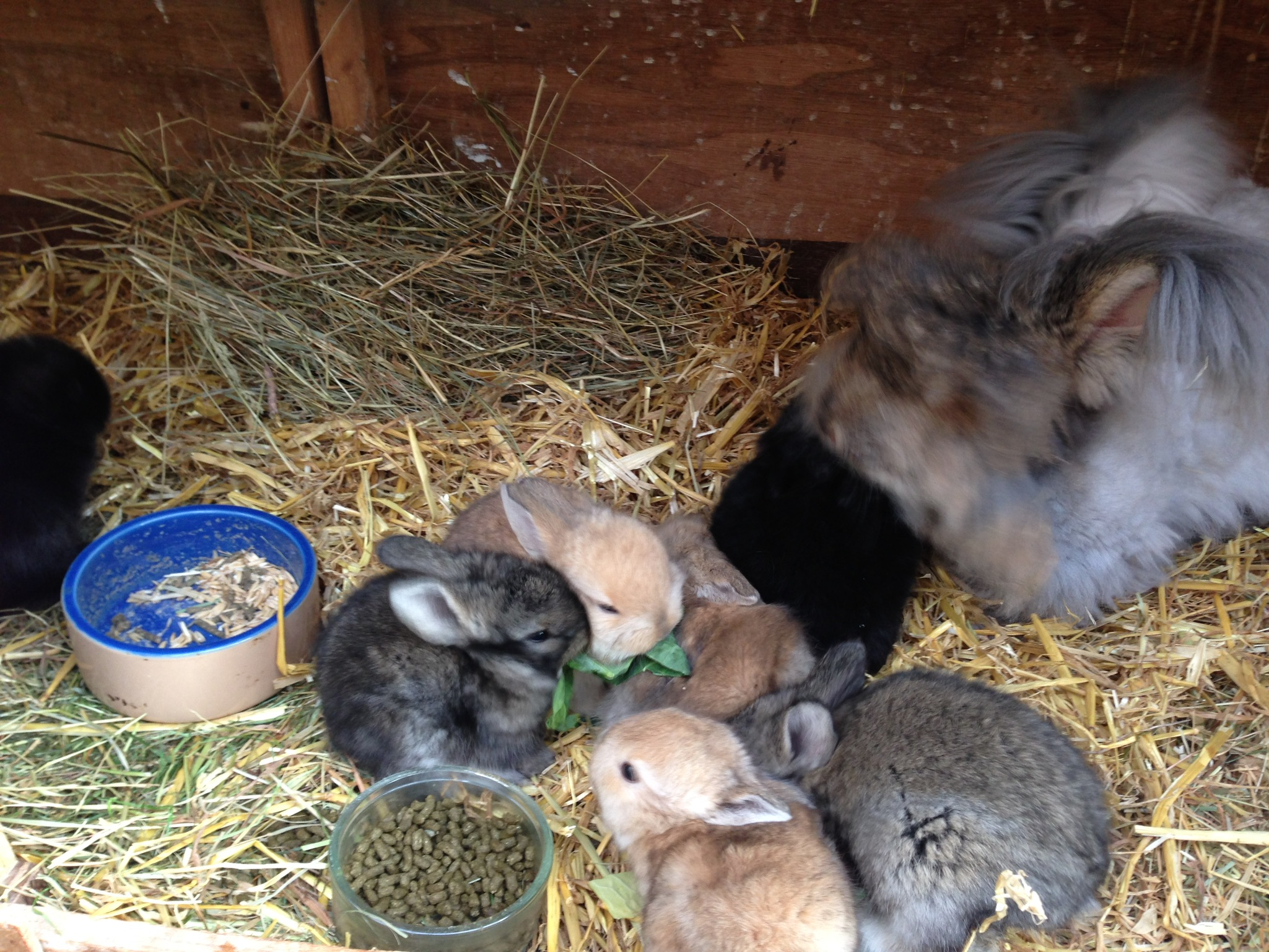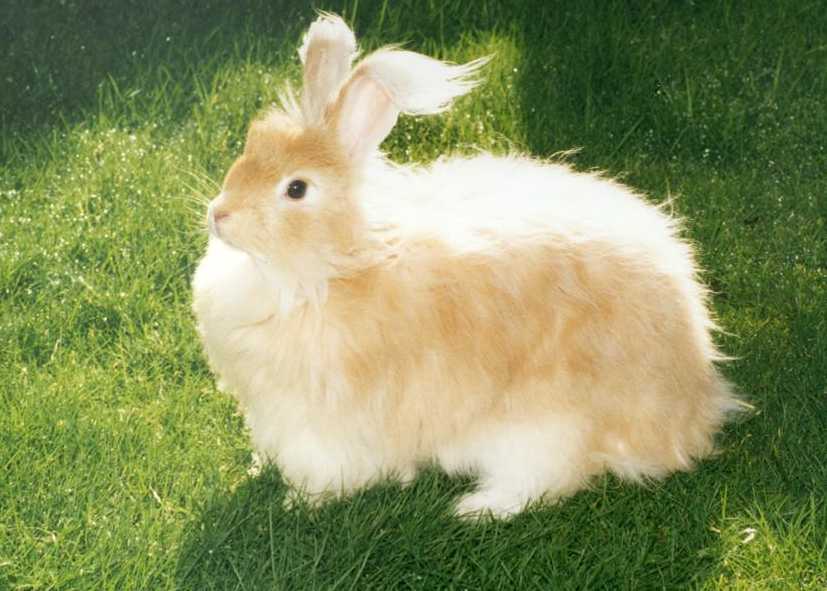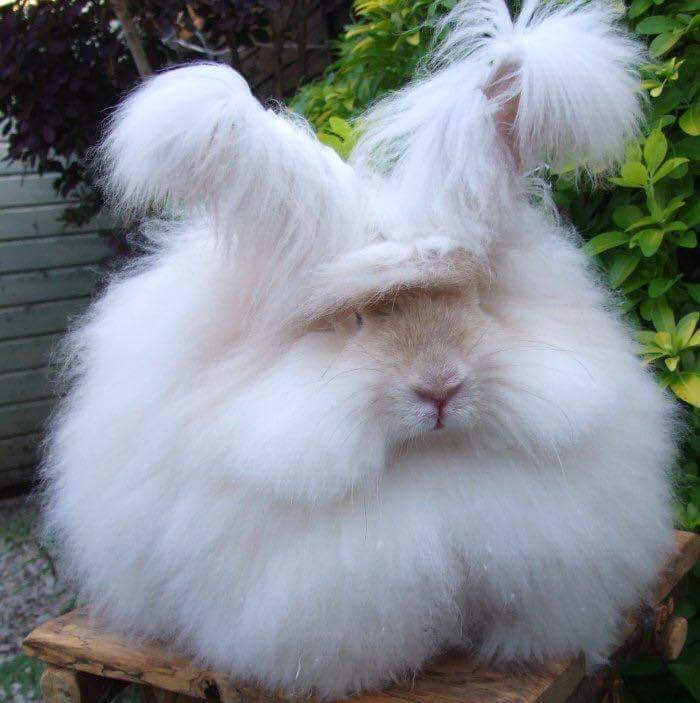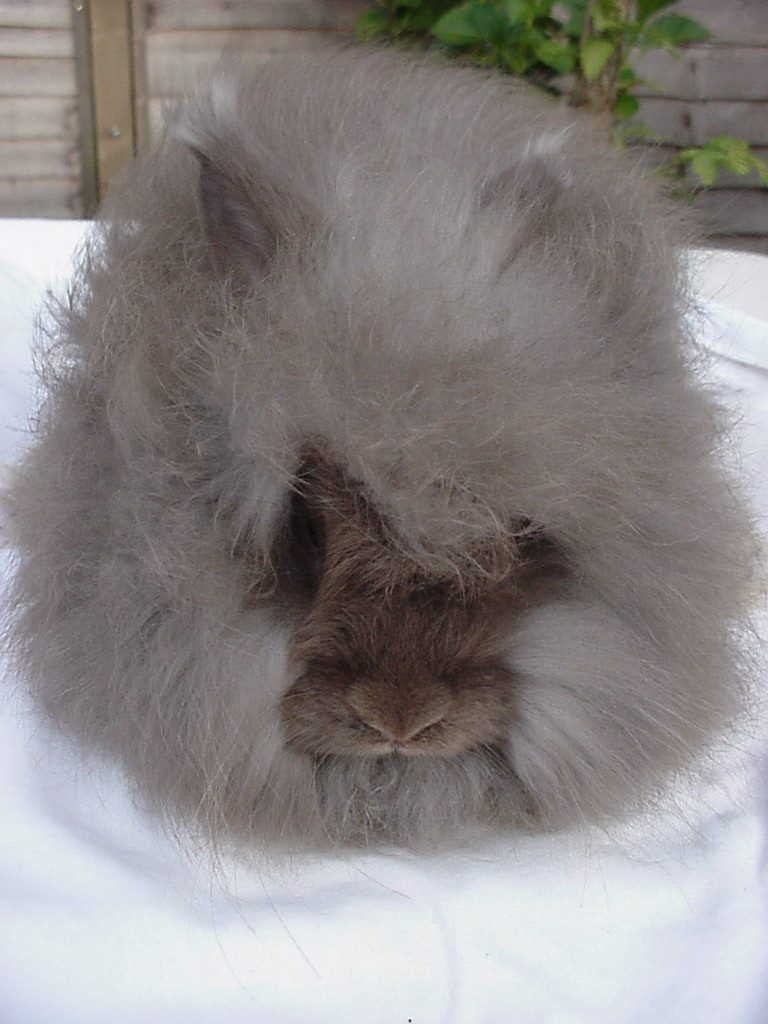The interbreeding of Coloured Angoras
The surging interest in handspinning that has arisen during the last few years has greatly increased our membership. Unfortunately, a large proportion of these newcomers, welcome as they are, have not the faintest interest in exhibiting and, therefore, do not appreciate how essential it is to preserve the highest standards of the breed, particularly regarding coloureds, to which enthusiasts in former years have devoted almost a lifetime in achieving improvement to the present high quality.
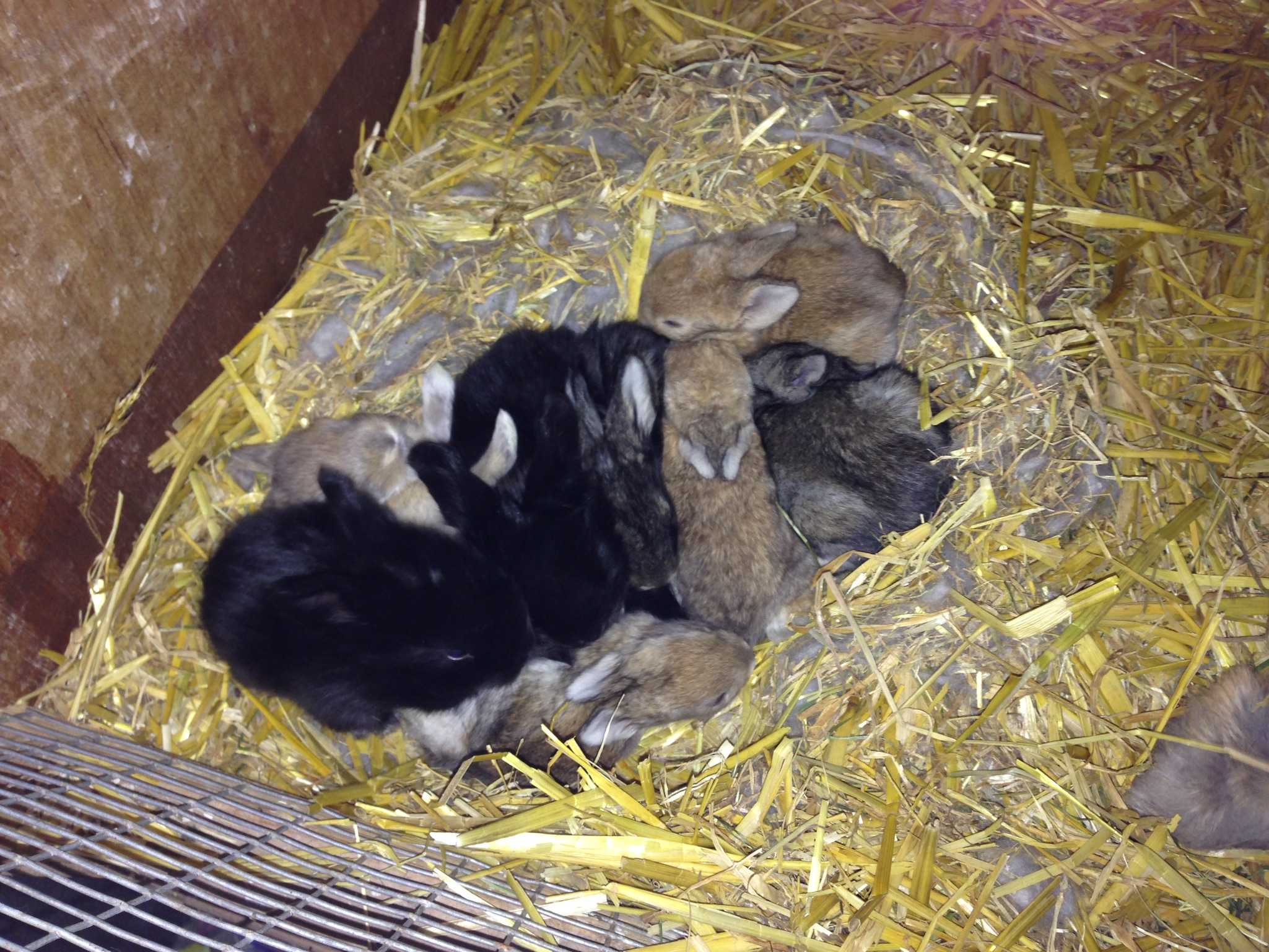
So much of this good work is now being undone by indiscriminate crossing of colours, resulting in many disappointed beginners when their purchases produce totally different colours from their parents, some carrying all the blemishes such as silvered ears and noses, white patches on head or body and incorrect wool shades, faults that we older members have spent years in eliminating. Details of the old guidelines may, therefore, be appreciated.
First, however, ask yourself why you intend to cross colours. If it is for financial gain without regard for quality, any advice will go unheeded and you will go on destroying the breed until your reputation catches up with you to your cost. If it is to experiment, don’t!
Any well experienced breeder will tell you the answer you are seeking and in any case, if you have stock of mixed ancestry, the rules of genetics cannot apply so easily. Thirdly, if you are considering crossing to improve your stock, think well before going ahead and ask yourself if it is really necessary. It is far preferable to keep colours true as far as possible.
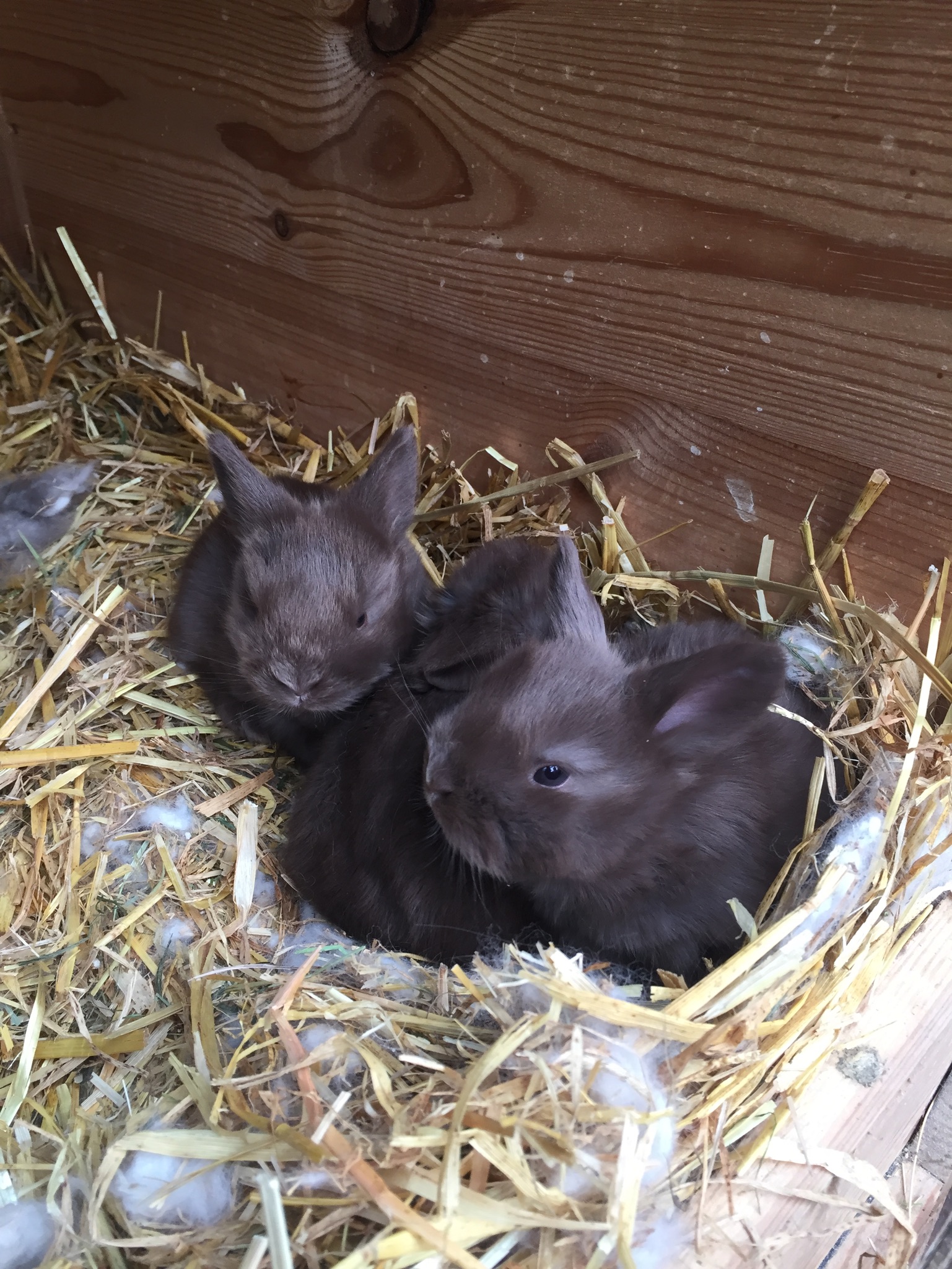
Have you tried to purchase better stock of your particular colour from a long established and successful exhibitor who is least likely to have introduced other colours? If unsuccessful in your search, then consider your present rabbits. Where do they fail? Is there one that excels in that particular point? The answer is to inbreed to that particular rabbit over one or two generations until you have corrected that fault.
It may be colour, type, furnishings or coat that needs the improvement, all possible by this method, providing the chosen improver has no very serious alternative fault which can be just as firmly implanted as the good point. Watch results very carefully and be very critical of all breeding stock as it evolves in future generations.
A risk you may think, but this procedure is far preferable to introducing another colour, which will influence breeding for several generations to come and even haunt you ten years or so later.
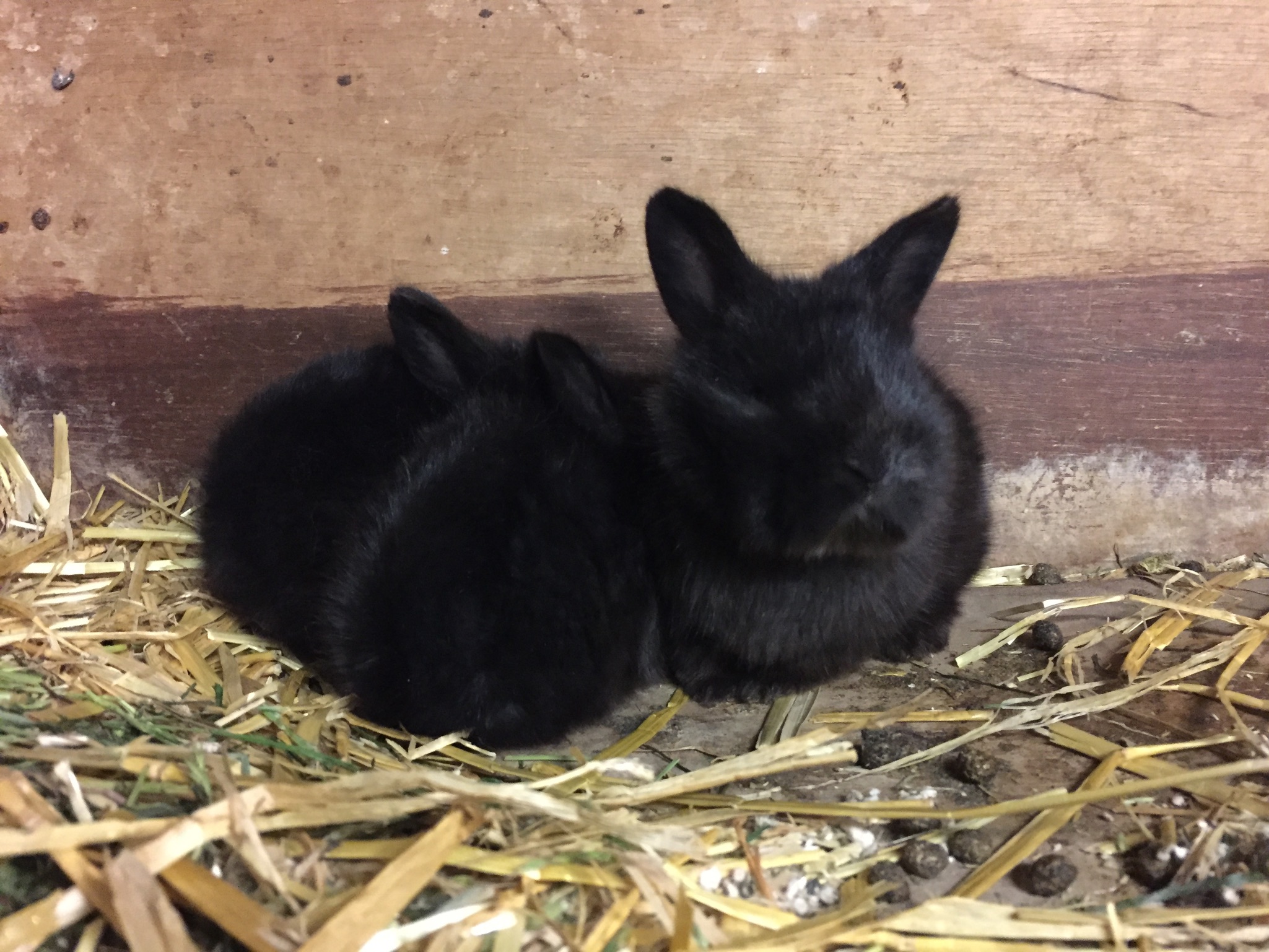
This brings us to the few colours which are long recognised as worthy of crossing without harmful results. As with any other breed that has Black and Blue in its colour range, our Blues and Smokes may be interested to the advantage of both, the Smoke keeping the Blue a dark shade well carried down and the Blue helping to eliminate the silvered ears and noses that plague Smokes and are a serious fault.
Agouti section
In the Agouti section, Brown-Greys are never pure bred and need occasional doses of other colours to maintain the desired colour. The introduction of Golden produces a tawny shade so preferred for handspun garments and a dash of smoke/blue breeding maintains the essential black tipping and the dark blue undercolour.
They will also accept white very well in moderation, but in all cases, only the Brown-Greys in the litter should be kept for breeding and showing and all other litter mates passed to spinners or as pets, as they can do untold harm to their colours if allowed to breed.
Golden’s, for instance, that may turn up in future generations, are apt to have brindled ears, points which are difficult to eradicate.

Blue-Greys, the blue version of the Brown-Grey, are practically extinct. In fact the only ones I have seen in recent years have been the product of crossed colours and, therefore, likely to produce everything but their own colour.
At one time, they were sufficiently stable to be able to accept occasional white breeding, but now we condemn a white base to the wool, Blue breeding that is clear of smoke for at least two generations, would probably prove beneficial.Again, keep only the Blue-Greys of this litter for breeding.

Chinchilla has been interbred with white as long as I can remember, but if used too often, the white influence results not only in very few Chins appearing in the litter, but those that do are often very pale in colour like the “ghosts” in the fur breed.
Only the dark ones with very black guard hairs and a deep blue undercolour are suitable for show. Watch for the occasional white foot or white patches on the nose (putty nose), a prevalent fault if white is over used.
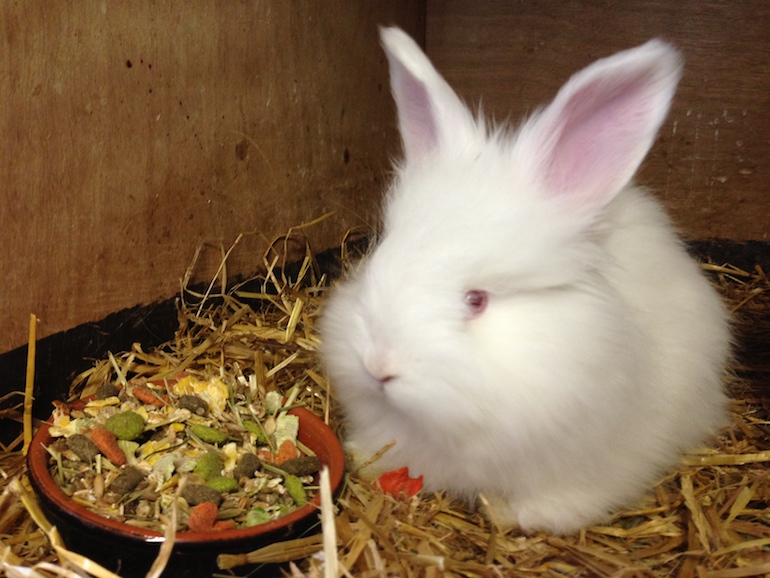
Depending on the quality of the parent stock, whites appearing in the litters are often very acceptable and if mated to pure white, will produce only White, so providing a useful out cross for whites on occasions.
They will produce some Chins only if mated to Chin. The fourth Agouti, the Cinnamon, has only just been re-established after many years of work on the part of an enthusiast,after about sixty years absence from the Fancy.
As far as I am aware, the true Cinnamon, with no sign of blue in its colouring (see the standard), is solely in the hands of this one breeder and when she decided to allow them to circulate, do follow her advice concerning future breeding.
Goldens
Golden’s should be kept true to colour. Sooty fawns may have golden introduced, but I would not keep Golden’s from such a mating, to use as breeding stock as the colour is likely to be affected, with brindling occurring. Remember, the Golden standard calls for a rich, clear Orange-Gold.
Creams
Creams and Blue-Creams may be interbred as they came from the same source, but cream seems to dominate the blue-cream, making the latter rather elusive. The two colours are easily distinguishable son after birth, the Blue vream having a coloured belly and the cream with a white belly.
Do not cross either colour with anything else as no useful purpose will be served, the cream disappearing altogether. Very occasionally something that can be mistaken for a Blue-eyed white appears in a cream litter.
This is NOT white as comparison with a true white wool will show. Actually its a “cream ghost”. Even if mated to another of its colouring, it will produce anything but its own colour and should not be kept in your breeding stock.
Chocolates
Leave the breeding of Chocolates as pure as possible. This colour is in the hands of a few enthusiasts, working to bring it up to show standard and the colour is still far from stable, with many bi-products that should not leave the studs of these enthusiast.
Sables
Up to about seven years ago, Sables had almost died out and the present day Sable has, from necessity of increasing its population, been freely interbred with White. It is now time to breed more sable to sable for several generations in order to reduce the white band that appears at the base of the wool.
At present, many sables have about an inch of colour to two of white. I am of the opinion that no other colour can help the sable and only a continued programme of sable to sable will bring the desired result. It will be realised that there are always likely to be bi-products in crossing colours. Be very firm and do not be tempted to breed them.
General advice
Finally, there is advice for beginners before buying stock. Never buy from a pet shop or market. There have been many”woolies” that turn up in litters of other breeds, sold as Angoras and at top prices too.
Rings
All Angoras should be rung, wearing a BRC ring on its hind leg, put on before the age of eight weeks. Do not put a ring on rabbits that do not meet the standard, or that go to spinners, or are sold as pets. This is an identity for the rabbit, and if it does not have one, either the breeder is not a member of the British Rabbit Council (our equivalent of the Kennel club), or its breeder considered to be of too poor a quality merit one!
Pedigree
A pedigree is regarded as essential for an Angora. The ring number should be mentioned on it. Visit our two Annual Club Shows which you will see advertised in the National Angora Club’s Year Book and talk to exhibitors. Thjey will provide you with the guidance that you need and you will have an idea of what to look for before buying stock.
As as many questions as you like. We welcome them!
by Mrs B A Prately (article reprinted from 1987)
